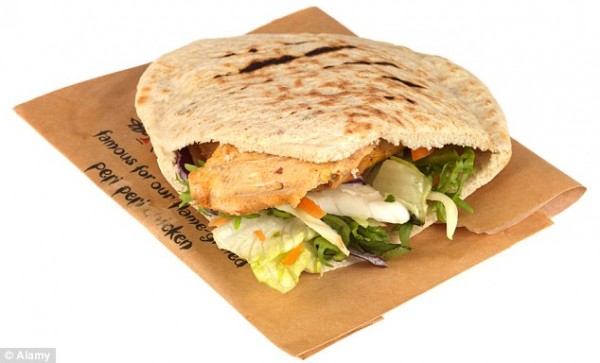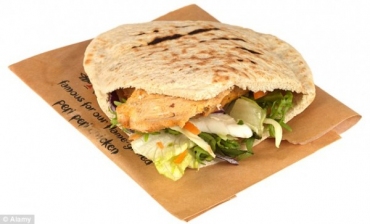Cynthia is a Makati-based bank representative who, from time to time, hungers for potato chips in the middle of dinners.
Generally, nonetheless, she’s been consuming less garbage sustenance and has moved to healthier snacks, in the same way as sandwiches, to fulfill her longings.
“Sandwiches that utilize entire wheat bread are healthier and generally as fulfilling,” she said, including that a late advancement and pay trek have provided for her all the more using force to substitute divine potato chips with more extravagant gourmet sandwiches.

“I consider it an interest in my individual wellbeing,” she said.
As per another study by worldwide research firm Nielsen, Cynthia (keep going name discarded on solicitation) is some piece of a developing number of Filipinos who now favor healthier snacks over more customary “garbage sustenance.”
Healthier nourishment
Nearby tastes on a nutrition class once overwhelmed by garbage sustenance are advancing.
Filipinos still love to use on delightful nibble treats in the middle of dinners however as the economy develops and the positions of working class natives with all the more using force expand individuals are beginning to move far from garbage nourishment and requesting healthier options.
Discoveries discharged as of late by Nielsen noted that nibble deals in the Philippines were climbing in venture with the nation’s developing purchaser base.
As per the Nielsen Global Survey of Snacking, there are changing and differing reasons why customers nibble.
Bread and sandwiches
Mainly, 74 percent of Filipinos perspective “eating” fundamentally as wellspring of nourishment.
This diverges from Indonesians, Malaysians, Singaporeans and Vietnamese who rank happiness as the principal explanation behind nibbling. In Thailand, 79 percent of purchasers nibble to fulfill a yearning.
The overview was directed among 30,000 online purchasers in 60 nations to recognize which snacks are most famous as far and wide as possible and which wellbeing, taste and surface characteristics are most imperative in the choice criteria.
Filipinos overviewed said that in the most recent 30 days, they consumed a wide mixture of snacks, however the biggest gathering of 31 percent favored bread and sandwiches above other nibble decisions.
This was trailed by 20 percent of respondents who wanted to nibble on foods grown from the ground, and 12 percent who liked to nibble on chocolate bars.
Fiber generally essential
“While the outlook of Filipino customers to eating is centered around wellbeing with inclination towards new snacks, which offer wellbeing and nourishment profits, they’re additionally searching for an infrequent treat,” Nielsen Philippine overseeing executive Stuart Jamieson said in an announcement.
The study uncovered that, reliable with their interest for nourishment, more Filipinos these days are searching for valuable fixings in their snacks.
Specifically, 63 percent of respondents rate fiber as the most paramount trait in the snacks they consume.
A lot of people likewise think about what nibble things don’t contain, generally to the extent that they think about what they do. Fifty-six percent of Filipinos said they favored snacks with all regular fixings, while 54 percent said they favored those with characteristic flavors.
Southeast Asian pattern
This is a piece of a more extensive Southeast Asian pattern, with Indonesians (56 percent), Malaysians (49 percent) and Thais (45 percent) saying the unlucky deficiency of counterfeit colors is the most essential wellbeing characteristic of the snacks they expend.
Sixty percent of Vietnamese buyers prioritize all characteristic fixings while low salt and no counterfeit shades best the rundown for 34 percent of Singaporean purchasers.
The Nielsen review additionally demonstrated that Filipino customers have a tendency to have an arranged methodology to their nibble utilization.
Filipinos, when all is said in done, purchase snacks in the store passageways and plan their buys before they get to the store, and in addition keep a few snacks in a stash.
‘Spontaneous snackers’
Be that as it may Filipino shoppers likewise show attributes of “spontaneous snackers,” including attempting new snacks, purchasing an assortment of snacks and making unplanned nibble buys.
Spontaneous snackers frequently consume snacks when they purchase them and have a tendency to purchase snacks at the check-out counter, Nielsen said.
“Customers possess two closures of the range: intentional toward one side and incautious on the other,” Jamieson.
$374 billion on snacks
As per Nielsen, worldwide shoppers used $374 billion on nibble sustenances every year somewhere around 2013 and 2014, a year-over-year increment of 2 percent.
Europe and North America make up the greater part of overall nibble deals ($167 billion and $124 billion, separately), however Southeast Asia’s creating countries are helping altogether to the class’ development at a rate of 3.6 percent year on year.
Using is relied upon to climb as Southeast Asia invites just about 300 million new buyers in the following decade; climbing pay levels and a blossoming working class populace will fuel development in the nearing years.

